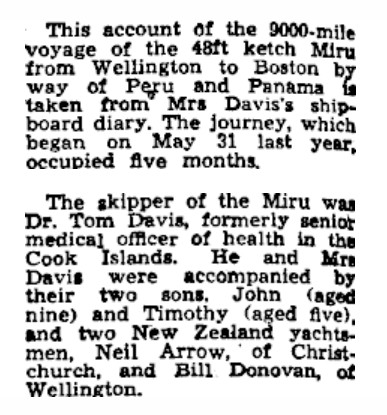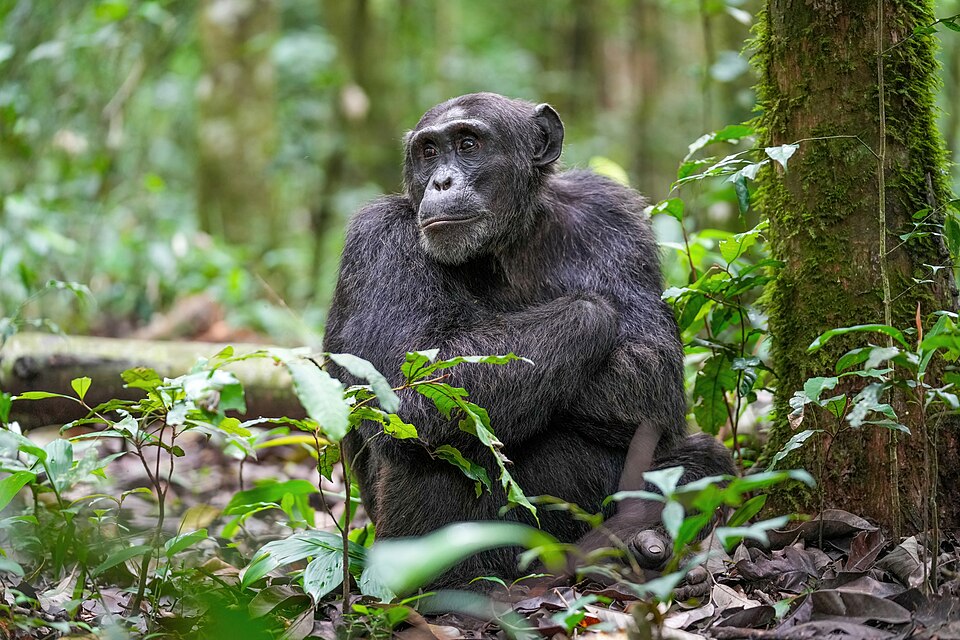%20cropped.jpg)
%20cropped.jpg)
Sir Thomas Robert Alexander Harries Davis, usually referred to as Tom Davis, was involved with politics in the Cook Islands, medical research for NASA and U.S. Defense, and contributed towards the Mercury and Apollo missions.
Sir Thomas Davis was born in Rarotonga, Cook Islands on 11 June 1917. He moved to New Zealand when he was twelve years old. In 1929, Rarotonga did not have any high schools, so Davis studied at Kings College in New Zealand to continue his education. After graduating from Medicine at the University of Otago in 1945, Sir Thomas Davis moved back to Rarotonga where he worked to improve the effectiveness and efficiency of the health sector. This included: restructuring the local health system, establishing more intense training programs for nurses, expanding the availability of healthcare to remote atolls to ensure that citizens of the Cook Islands could receive standardized healthcare treatment. This also included focus on reduction in the number of cases of tuberculosis in Rarotonga.
In 1952, Davis moved to pursue postgraduate studies, choosing to complete a master's degree in environmental medicine and public health life. He chose to sail to America aboard the Miru, a 44-foot-long ketch rigged yacht, sailing through Peru and the Panama Canal on his way to the Boston Harbour.
In 1958, Davis was appointed Director of Environmental Medicine for the U.S. Army at Fort Knox. In 1962, he begun working at NASA as a ‘Physiological Research Engineer’, working in the Life Sciences Division at the previously named Manned Space Spacecraft Centre located in Houston, now known as the Johnson Space Center.
Davis’ work for the U.S. Defense services and eventually NASA, ranged from biomedical experimentation, life support monitoring and radiation and re-entry research. The role of physiological research engineer required a deep understanding of mechanical principles in conjunction with the understanding of biomechanics of the human body and the health and wellbeing of the astronauts. Davis was selected to lead a team of twenty scientists to work on the life support systems of the capsules, while also overseeing a smaller team who selected the chimpanzees and trained them to collect data while in space.
Initially he worked with chimpanzees on primate space capsules designed for the eventual use of taking humans into space, but initial trials were on chimpanzees. Chimpanzees played a critical role in testing and proving of this technology due to the chimpanzees respiratory and cardiovascular systems closely mirroring the human equivalent. This made collecting reliable data without using a human instead. The chimpanzees wore sensors that tracked their respiratory rate, blood pressure, heart rate and levels of oxygen saturation. A large portion of this testing involved the ‘maximum’ limits that the body could sustain without completely shutting down. These sensors were also capable of picking up where CO2 would build up in different cavities of the space capsule, and whether the LiOH scrubbers were capable of filtering this air before posing life ending issues. One major component of the life support system inside the capsules was the use of lithium hydroxide to remove carbon dioxide from breathable air. The LiOH scrubber system operated through the simple chemical reaction between lithium hydroxide and carbon dioxide. When these molecules interacted, lithium carbonate (Li2CO2) would form, along with water (H2O). This discovery and trial led by Davis proved that the passive system was reliable, lightweight, and very easily maintainable during missions. Under Davis’ leadership, the parallel research and development from the life support system and use of chimpanzees led to use of a specific variant of the square shaped scrubber due to its effectiveness and versatility. The research conducted also led to the flight commanders learning just how many scrubbers were required per crew, and how often these scrubbers would need to be replaced. Without this testing, the chances of a medical emergency occurring in space would have been much greater, and the death toll of the Gemini and then Apollo program would have been much higher than they ended up being.
Although the use of chimpanzees and LiOH scrubbers cannot be exclusively credited to Sir Thomas Davis, his previous knowledge of environmental medicine gave him a deeper insight into how the systems could operate, and what the most efficient methods of testing have been to validate this technology.
In 2007, Sir Thomas Davis passed away at the youthful age of ninety years, surrounded by family and spending his final moments where his life began, Rarotonga. His exceptionally fulfilling life included the role of the Cook Islands Prime Minister between March 1978 to November 1987, representing New Zealand as High Commissioner and the first person to work at NASA who had been educated in New Zealand. His involvement with the development of the life support system became apparent in its success when Apollo 13 went through a nightmare scenario, and the crew were successful in transferring the entire LiOH scrubbing system from the main capsule to the landing capsule for a safe return to Earth. Although this passive system is incredibly simple in its function, modern space capsules, namely the SpaceX Dragon Capsule and the less successful Boeing Starliner, incorporate near identical technologies to what Davis helped development back in the 1960’s.
Sir Thomas Robert Alexander Harries Davis made an impact in the Pacific and in Space innovation, showing leadership in the Cook Islands, in his work in the United States of America and then as a Prime Minister and High Commissioner.
In 2025, Our Health Journeys continued our partnership with Saint Kentigern College in Auckland to challenge a number of students to conduct research into an aspect of the medical history of Aotearoa New Zealand. The students, ranging from Years 8-13, produced their research in written, oral, or video format and the top projects were chosen for publication to Our Health Journeys.





